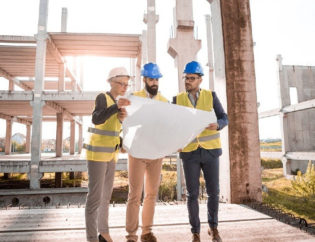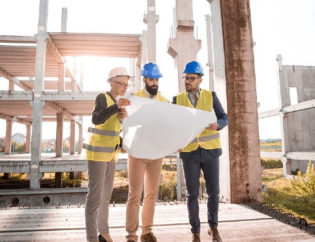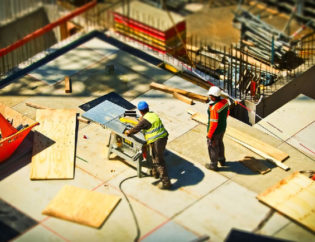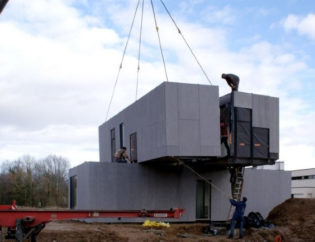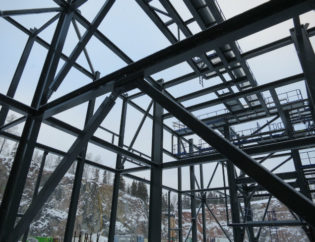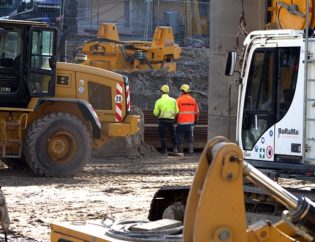
Modular construction projects have changed the way of constructing buildings. With the growing popularity of modular construction in Canada, there are still some misconceptions persisting in the minds of the business owners. Therefore, to clear some air, we have debunked the common myths about modular buildings to let you make an informed choice if you are planning to start a new construction project.
Myth #1: Modular Structures Are Temporary
Modular construction projects are manufactured in controlled factory settings. The manufacturing company has to follow most of the permanent building standards while making these components. Therefore, every component produced by the company is according to the regulations and standards of federal, state, and local laws. Modular structures act as a fast-track route compared to the traditional building by eliminating the inspections processes and meeting the regulations of the building in the area. Though there might be a number of permanent buildings around us, it is often difficult to tell the difference between a modular structure and a traditionally-built one.
This means that modular structures will provide benefits such as:
- Consistency in the quality of materials and
- Long term solution across a wide range of different applications (education, health care, retail, and business).
It might be completely correct to say that modular structures can provide temporary (interim) solutions. But it is also true that modular buildings are ideal for long-term projects as well. These structures stand tall just like (or even better) a traditional building.
Myth #2: Modular Structures Are of Low Quality
Most modular structures are built to comply with the same building codes as that of the traditional buildings. When modular construction projects comply with the building codes, quality assurance is also included in the codes. As these structures are prefabricated in factory settings, the quality of materials used is high, and they are durable and strong. As mentioned above, you are just changing the process of the business and not the materials used.
Myth #3: Modular Structures Are Not Weather-Resistant
Traditional structures depend a lot on the insulation. Every structure has a certain quality of insulation that regulates the weather-resistant levels of that structure. Structures having good insulation is the key to ensure a comfortable internal environment. Modular structures can achieve the same levels of insulation and become weather-resistant just the stick-built buildings are. All buildings are designed to keep the environment inside the building regulated during temperature fluctuations and extreme weathers
Myth #4: Modular Structures Is a New Construction Process
The first record of a modular building appeared in the South Australian record in 1837. The structure was designed by Henry Manning who built the components in London and shipped them to Australia. A lot of modular were designed and erected during the mid-1800s. Modular construction projects are only gaining popularity today across industries. But actually, modular construction is not a new process.
Myth #5: Modular Structures Offer Limited Utility
Modular buildings offer owners the flexibility in the application and the acquisition of the building. Did you know that traditionally-constructed building can be extended with a modular building? Yes, this is the extent to which modular construction projects can be flexible in terms of design. Modular buildings can be expanded vertically or horizontally according to the needs of the builder. You can easily expand an existing building vertically or horizontally over a given land. Talking about the new buildings, modular construction projects can be flexible and customisable to meet any purpose and need.
Myth #6: Modular Structures Offer Few Design Choices
In modern modular construction, the architectures are teaming up and embracing the efficiency and benefits of modular construction. Technically-advanced modular construction projects can deliver buildings with a much greater degree of design flexibility. Designers have also combined the site-built features to realise their vision in a flawless structure.
Myth #7: Modular Structures Are for People Who Have Low Income
Modular constructed buildings provide alternative methods for satisfying the space requirements according to the needs of the client. But the question remains would it still be considered as ‘cheap’? Modular construction is just a method of construction and not a rocket-science that will cost a lot. Modular construction is meant for people with all budgets. The amount of cost savings achieved by the end of the project includes reduced time project management, limiting waste material, lowering labour costs, etc., thus improving the performance and the quality of the building constructed and a faster return on investment.
Myth #8: Modular Structures Have Bouncy Floors
It all depends on which supplier you have chosen for your modular building. Modular building supplier offers a range of flooring options that you can choose to avoid the floor vibration factors. Good manufacturers offer you a high-performance pre-installed concrete foundation, with a good floor option which is ideal for,
- Handling high traffic areas such as schools and hospitals.
- Accommodating heavy loads such as supermarkets and warehouses.
- Facilitating sensitive equipment such as operating theatres.
They offer a range of floor response factors to meet your project requirements.
So now that these common myths have been busted, don’t be fooled or get confused. Modular buildings have many noteworthy benefits to offer. So go beyond the myths and get started!
